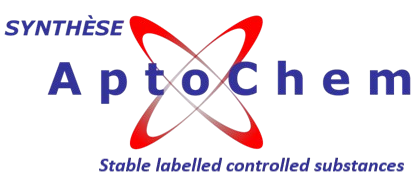Radiolabeled Test Articles
A radiolabeled test article can be used to establish the pharmacodynamic and pharmacokinetic profile of a given molecule. These types of studies called DMPK are done in vivo using different animal models. Often, the bottleneck in launching DMPK programs is the availability of the radiolabeled drug. Due to the regulation and expertise involved in manipulating radioactive materials, radiosynthesis is a resource that is not always available to companies involved in drug development and an outsourcing partner, like AptoChem, must be found to prepare a radiolabeled drug.
C-14 labeling
Often, 14C will be the isotope of choice for doing DMPK work. A compound with 14C labelling will have only a radioactive beta decay, which is a non-ionizing type of radiation and is much safer to handle then a gamma emitting isotope. 14C labelling will also provide a better stability toward metabolism than Tritium, because it cannot exchange with the water present in the body fluids. 14C possess also a higher energy emission than tritium and will therefore give a better radiation counting efficiency (approx. 94% vs. ≤47% for Tritium).
The length of a given radiosynthesis will vary greatly depending on the complexity of the target molecule and the radioactive reagents available for 14C labelling (and those are very limited...). For instance, in some rare occasion, the radiosynthesis pathway used can be exactly the same as for the unlabeled drug. But in most cases, the preferred strategy will be to synthesize a known radiolabeled drug intermediate and complete the 14C labelling using a known pathway. It is also possible that AptoChem will have to design a completely new radiosynthesis strategy to produce the radiolabeled drug. The amount of radioactivity and specific activity of a given radiolabeled drug will be two essential parameters to be determinate in order to meet the DMPK study requirement. The amount of radioactivity will depend on the number of models to be dosed and at which dose. The specific activity is dependent on the radioisotope used. In theory, the maximum available specific activity for 14C labelling would be 62.4 mCi per mmol. In practice, there is no complete enrichment in 14C and the maximum SA achievable should be between 40 to 60 mCi per mmol. So, for a radiosynthesis that would include only one 14C label, it is possible to have a specific activity a little above 50 mCi per mmol.
In a DMPK study where the radiolabeled drug will have a high molecular weight and would require a small dose of test article, it is possible to incorporated more than one 14C label to obtain a specific activity suitable for the study requirements. For example, with two 14C labels, it would be possible to have a specific activity a little above 100 mCi per mmol.






